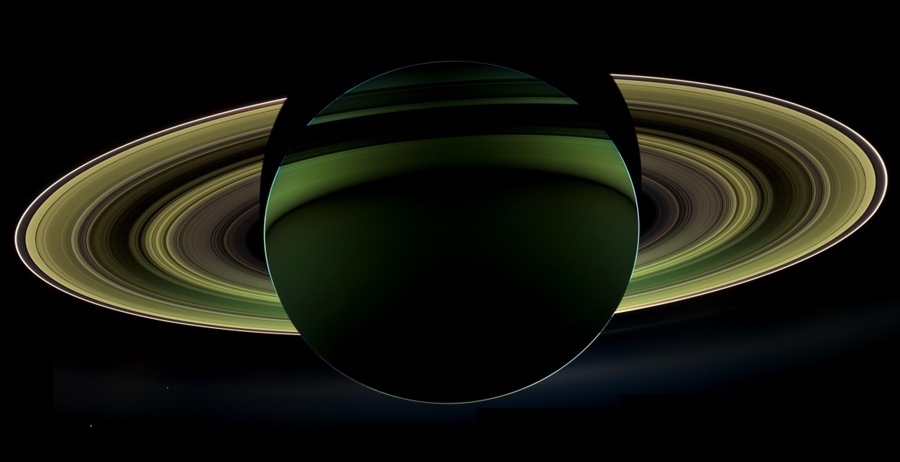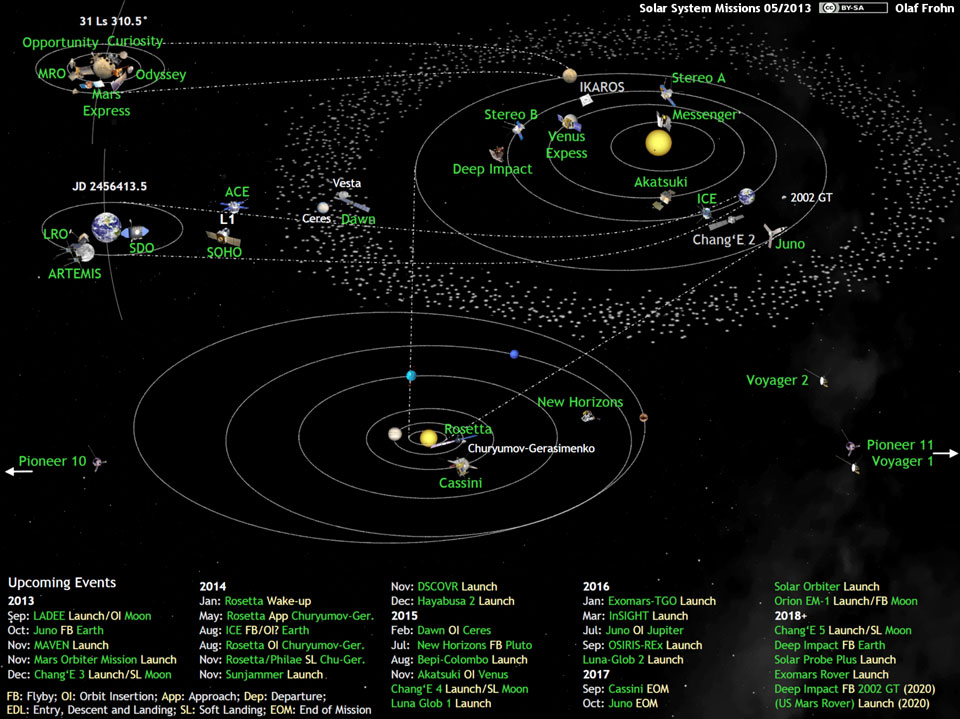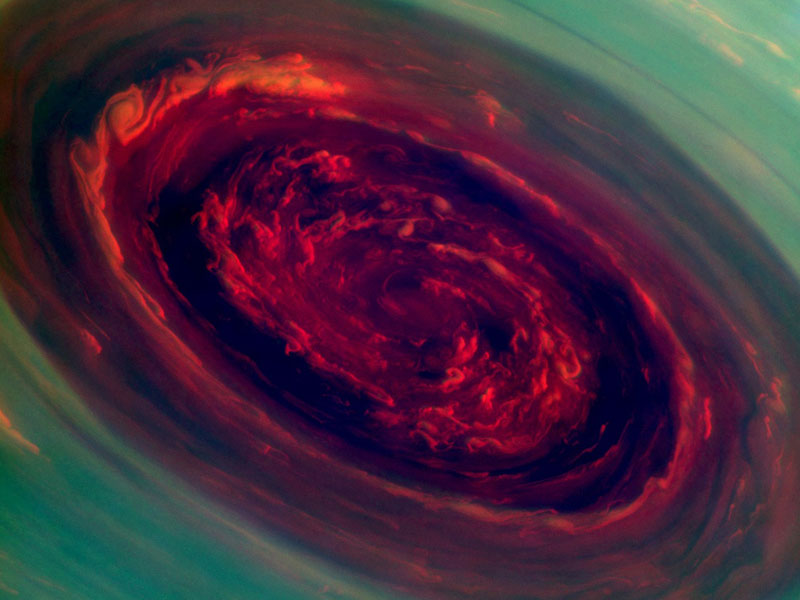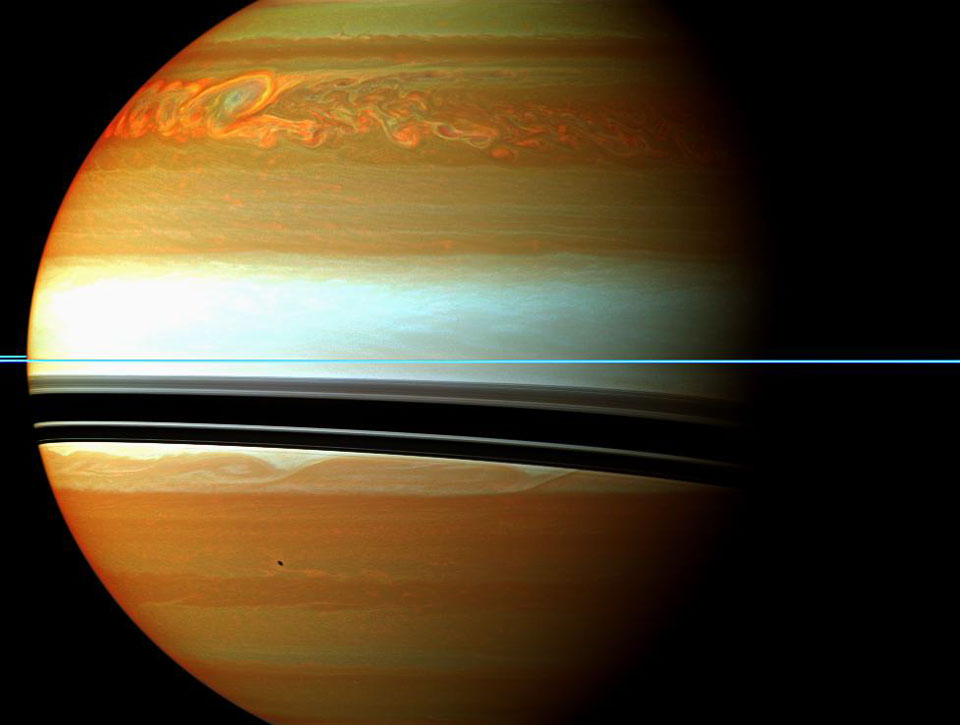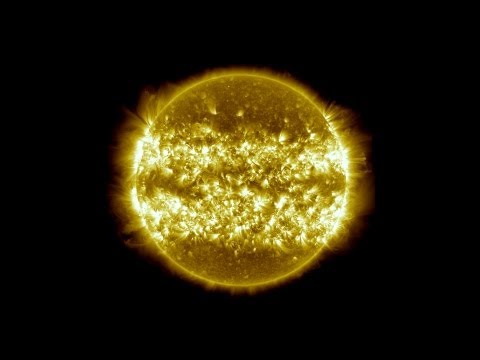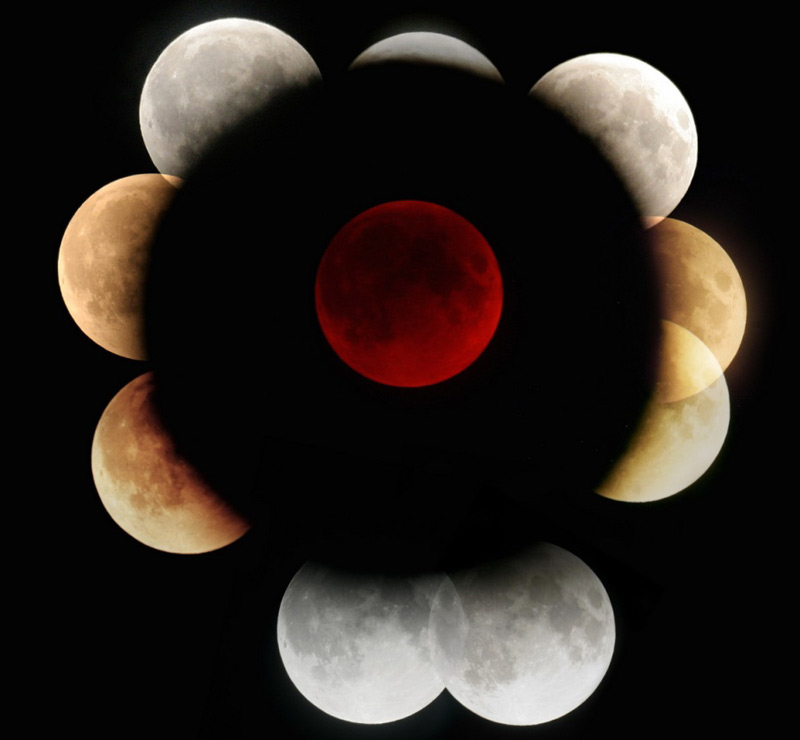Saturn at Night
Splendors seldom seen are revealed in this glorious picture from Saturn’s shadow. Imaged by Cassini on October 17, 2012 during its 174th orbit, the ringed planet’s night side is viewed from a perspective 19 degrees below the ring plane at a distance of about 800,000 kilometers with the Sun almost directly behind the planet. A 60 frame mosaic, images made with infrared, red, and violet filters were combined to create an enhanced, false-color view.

